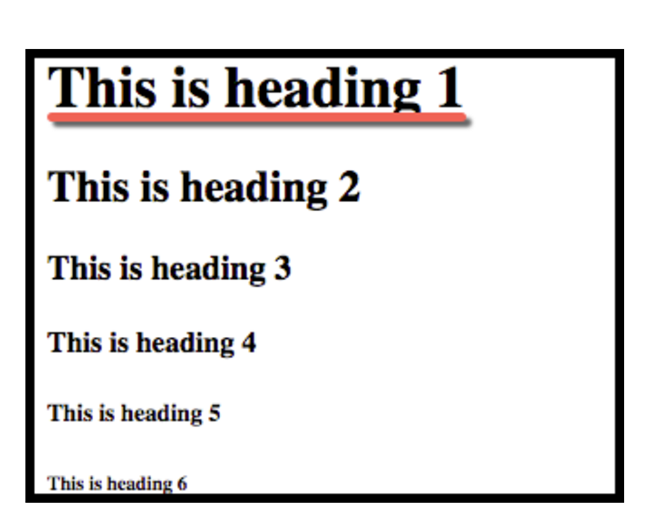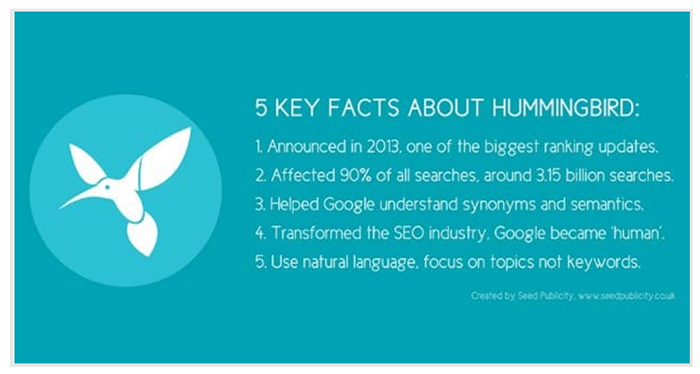How Header Text Impacts SEO

How Header Text Impacts SEO
80% of first-page search results on Google use an H1 header. Here’s everything you need to know about boosting your SEO strategy with header text.
Search engine optimization (SEO) may change, but header text is constant. From H1 to H6, headers are an organizational tool that guides the user through your web content.
According to SearchMetrics, 80% of first-page search results on Google use an H1 header. While the use of headers correlates with SEO success, the impact of headers on search results has declined in recent years. Headers will continue to influence SEO rankings, but the way they do so is now largely unrelated to keywords.
“SEO is more about user optimization than it is about search engine optimization,” says content guru Neil Patel. No longer just a cubby hole for keywords, headers improve the navigability and usability of content. These days, the focus is on user experience.
This post shows you how to use header text to boost your SEO strategy in four sections:
- How headers impact search engines
- How headers impact users
- How headers impact semantic search
- Best practices for headers
How Header Text Impacts Search Engines
Header tags make it easier for web crawlers to gauge the relevance of your web content. In the hierarchy of headings, H1 text is the most important to SEO. This is the title of the web page, so search engines look to the keywords in the H1 header to categorize and surface content to users.

That said, keyword placement in H1-H6 headers is thought to no longer impact search engine rankings, according to Search Engine Journal. Rather, the order of headers (H1-H6) is just a navigational element that specifies the relative importance of on-page content.
However, the H1 header and its content does impact the user experience, and therefore SEO.
How Header Text Impacts User Experience
Headers make your content easier for people to understand and digest. As the anchors of your page navigation, they are essential to a quality user experience – and in turn, your SEO ranking.
The H1 header draws the user’s attention and announces the page contents. It’s the most important because it’s both the largest text on the page and the title for the page’s content.
Using an H1 header is like giving a book a title. Without a header, readers would be confused about the content to come. This navigational cue clarifies the page's contents, removes ambiguity, and prevents users from immediately bouncing from your site.
The H1 header should contain the primary keywords for the page. While the keywords in headers won’t impact search results, they will affect the relevance and usability of your page. Simply, headers with keywords are more effective at pulling the audience into your content.
The next section about semantic search will explain how this helps to improve your SEO ranking.

But first, you can also use H2 header text for web page subheadings. In a blog post, the H1 would be your blog title and the H2 tag would separate the different sections. H3-H6 headers are rarely used, as they’re of a minor size.
However, H3-H6 headers can improve the organization of long-form content such as ebooks, case studies, and the table of contents. The keyword placement within H2-H6 headers is considered to be unimportant – and this next section explains why.
How Headers Help with Semantic Search
Modern SEO is more concerned with user intent than with keywords. What is user intent? It’s what the reader hopes to gain from reading web content. A well-crafted header should speak to a user’s query but doesn't need to contain every relevant keyword.
Since Google released the Hummingbird algorithm, search crawlers can understand the semantic meaning within web text. As a result, keywords are no longer the standalone way of assessing a page's value for web users.
Instead, a diversity of on-page elements like headers, keywords, organization, and images are considered as a whole. Synonyms, varied contextual definitions, and the overall use of language are also examined. This means that SEO rank is now reflective of content quality, relevance, structure, and overall user experience.
As this graphic shows, the Hummingbird update made quite a change to SEO.

For content creators, this frees you to write more naturally and focus on topic depth and quality, rather than keyword placement and density.
Nearly 91% of all businesses with a budget over $500,000 are investing in SEO, so this marks a shift in the content strategy for large brands. Even for small businesses, SEO marketers are compelled to invest in more comprehensive and user-oriented content to stay atop the search engine results pages.
Best Practices for Headers
Search engines want to make searching and finding the right content as easy as possible. To succeed with SEO, you should make that easier too. Here are four tips for crafting effective headers for your SEO strategy.
- Use the H1 header to indicate the page topic. A good user experience starts with the header. The H1 tag should make clear what the page topic will be. Whether it’s a blog post title or the “About” section of your site, make the H1 large enough to be obvious, but short enough to be easily read and understood.
- Use only one H1 header. Using multiple H1 headers will confuse the reader. Additionally, it dilutes your keyword efforts with search engines. Keep your keyword efforts focused and easy to understand with one H1.
- Use a long-tail keyword for the H1. The more specific the page header, the more interesting it will be to readers. Since user intent is so important, long-tail keywords are great for showing readers they’ve found the exact right page.
- Use H2 subheadings to break up content. Using an H2 tag every 200-500 words will create page breaks that allow each text section to breathe. The more digestible your content, the more likely people are to consume it and continue reading. Resist the urge to put keywords in every subheading, as this could lead to a penalty for keyword stuffing.
Overall, headers will make your content more engaging and consumable for readers.
Learn 7 tips for writing for the web.
How Header Text Impacts SEO
These days, headers are a signpost to readers – not stash points for keywords. Search engines are focused on delivering the most valuable content, so on-page factors like usability and relevance are receiving more priority than ever.
Keywords are still important. However, they’re no longer the primary goal for SEO strategy. Use headers – H1 especially – to indicate the topic and help users navigate your best content.
